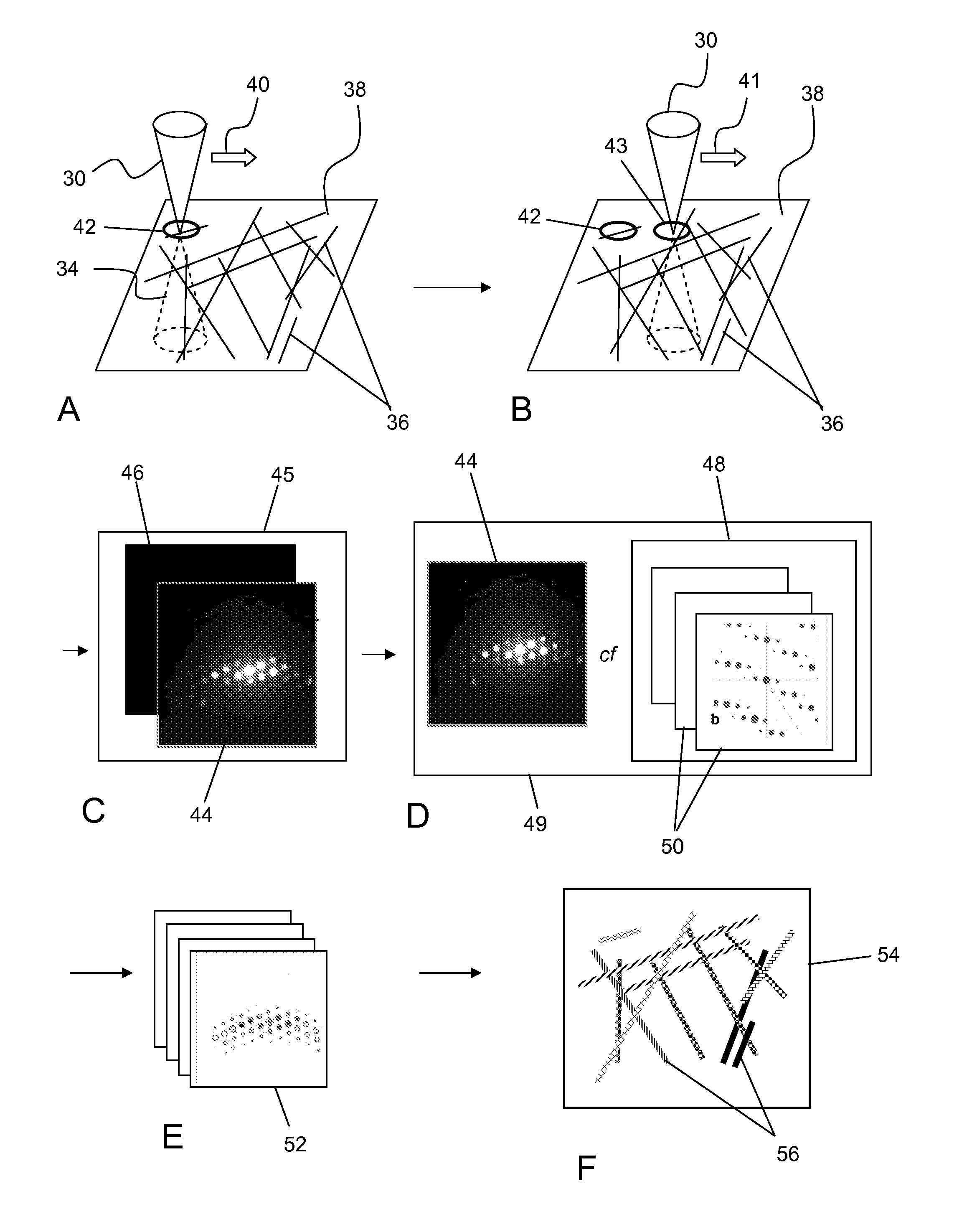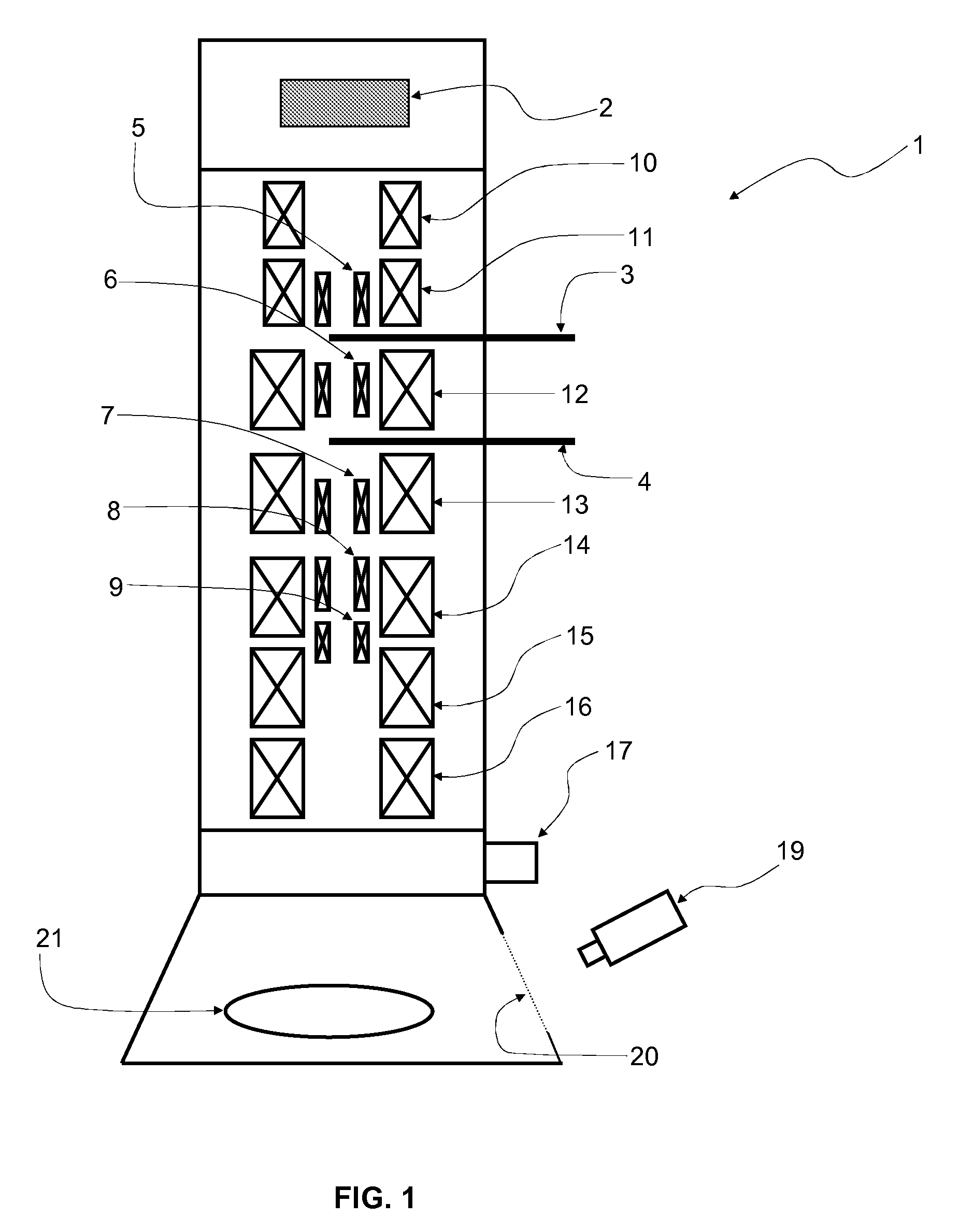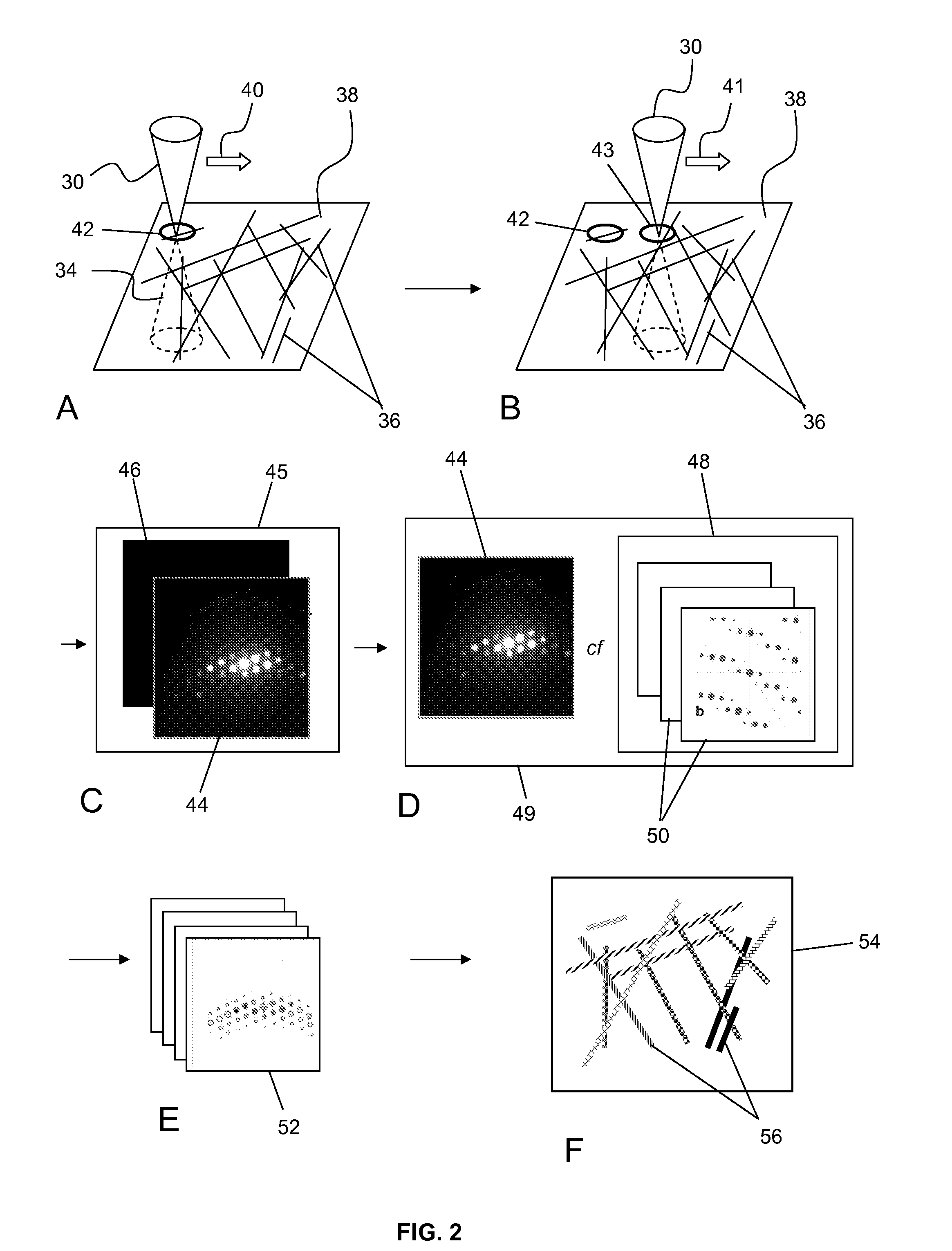Methods and devices for high throughput crystal structure analysis by electron diffraction
a crystal structure and electron diffraction technology, applied in the direction of material analysis using wave/particle radiation, instruments, nuclear engineering, etc., can solve the problems of limiting the contribution of x-ray crystallography and consequently to any attempt at high throughput analysis to nanoscience, and the traditional method of atomic structure determination, x-ray crystallography, etc., to achieve improved identification/fingerprinting of individual grains/crystallites, high throughput rates, and improved quality orientation phase map
- Summary
- Abstract
- Description
- Claims
- Application Information
AI Technical Summary
Benefits of technology
Problems solved by technology
Method used
Image
Examples
example 1
[0143]An example of template matching to determine the orientation of crystals in a sample of nanocrystalline copper is depicted in FIG. 5. FIGS. 5A and 5B show simulated templates generated for all orientations over the stereographic triangle. Shown in FIG. 5C is the experimental ED pattern acquired using a TEM equipped with a CCD camera of one location in the sample of nanocrystalline copper. The ED pattern was compared to every simulated template; shown in FIG. 5D is a matching template superimposed with circles from the experimental ED pattern. A correlation indexes map was generated as shown FIG. 5E showing the best match, i.e. the most probable crystal orientation at the point of acquisition.
example 2
[0144]An example of template matching to determine the orientation of crystals in a sample of asbestos fiber crystals is depicted in FIG. 6 when a scanning protocol (precession) is not used compared with when it is used. Beam scanning is used in both cases. An experimental ED pattern was first acquired using a TEM at a location in the sample of asbestos fiber crystals with precession not used, resulting in an ED pattern shown in FIG. 6A captured by a CCD camera. The ED pattern was compared to every simulated template; shown in FIG. 6B is a matching template superimposed with circles from the experimental ED pattern. A corresponding correlation index map was generated, with the orientation indicated with a white spot (S), as shown in FIG. 6C. According to matching, ED pattern is 0.65° misoriented in relation to the nearest ZA [1 01]. An experiments ED pattern was then acquired at the same location in the sample of asbestos fiber crystals with precession used, resulting in an ED patte...
example 3
[0145]A further example of template matching to determine the orientation of crystals in a sample of asbestos fiber crystals is depicted in FIG. 7 employing beam scanning, when a scanning protocol (precession) is not used compared with when it is used. Beam scanning is used in both cases. An experimental ED pattern was first acquired using a TEM at a location in the sample of asbestos fiber crystals with precession not used, resulting in an ED pattern shown in FIG. 7A captured by a CCD camera. The ED pattern was compared to every simulated template; shown in FIG. 7B is a matching template superimposed with circles from the experimental ED pattern. A corresponding correlation index map was generated, with the orientation indicated with a white spot (S), as shown in FIG. 7C. According to matching ED pattern is −2° misoriented in relation to the nearest ZA [1-10]. An experiment ED pattern was then acquired at the same location in the sample of asbestos fiber crystals with precession us...
PUM
 Login to View More
Login to View More Abstract
Description
Claims
Application Information
 Login to View More
Login to View More - R&D
- Intellectual Property
- Life Sciences
- Materials
- Tech Scout
- Unparalleled Data Quality
- Higher Quality Content
- 60% Fewer Hallucinations
Browse by: Latest US Patents, China's latest patents, Technical Efficacy Thesaurus, Application Domain, Technology Topic, Popular Technical Reports.
© 2025 PatSnap. All rights reserved.Legal|Privacy policy|Modern Slavery Act Transparency Statement|Sitemap|About US| Contact US: help@patsnap.com



